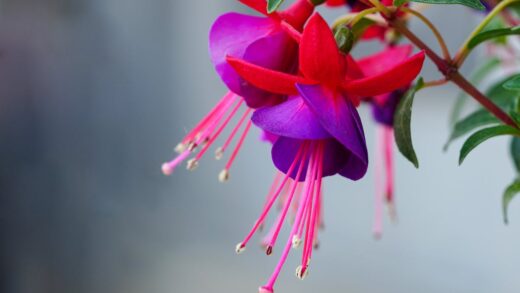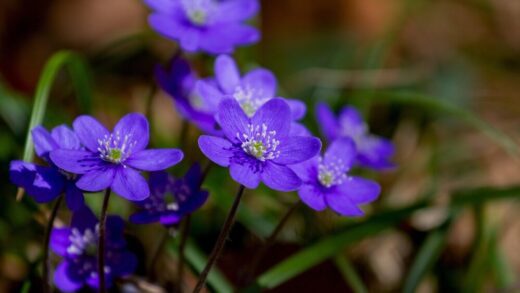The relationship between the cape daisy and sunlight is fundamental to its very nature, dictating its growth habits, health, and, most importantly, its ability to produce the magnificent floral displays for which it is so highly valued. As a native of the sun-drenched landscapes of South Africa, Osteospermum has evolved to not only tolerate but to actively thrive in high-light environments. Understanding and providing for these specific light requirements is not merely a suggestion for good care but a prerequisite for success. Without adequate sunlight, the plant simply cannot perform to its potential, often resulting in a disappointing display of foliage with few, if any, flowers. This expert guide will illuminate the critical role of light in the life of a cape daisy and provide clear recommendations for optimal placement.
The primary function of light for any plant, including the cape daisy, is to fuel the process of photosynthesis. This is the biochemical process where the plant uses light energy, water, and carbon dioxide to create its own food in the form of sugars. These sugars are the energy source that powers all of the plant’s functions, from developing strong roots and lush leaves to producing vibrant flowers. When a sun-loving plant like the cape daisy is deprived of sufficient light, its capacity for photosynthesis is severely limited. This energy deficit directly impacts its ability to grow vigorously and, crucially, to initiate the development of flower buds.
Cape daisies are classified as “full sun” plants, a designation that has a very specific meaning in horticultural terms. To be considered a full sun location, the area must receive a minimum of six hours of direct, unfiltered sunlight each day. For cape daisies, this is the absolute baseline for acceptable performance. However, for the most prolific and spectacular blooming, providing even more sun, in the range of eight or more hours per day, is ideal. The intensity of the light is also a factor; the direct, powerful rays of the midday and afternoon sun are particularly beneficial for stimulating the highest level of flower production.
The plant’s behavior is intrinsically linked to the presence of light. A fascinating characteristic of many Osteospermum varieties is their nyctinastic movement, where the flower heads close up at night or during very dark, overcast days. This is a natural, photoperiodic response that conserves the plant’s energy. It also serves as a clear visual indicator of the plant’s deep connection to sunlight. When the sun returns, the petals unfold once again, ready for pollinators. If you notice your flowers are consistently failing to open fully during the day, it can be a strong indication that their current location is too shady.
Choosing the right location from the outset is the most critical decision you will make regarding your cape daisy’s light exposure. In the garden, this means selecting a spot that is free from the shadows cast by buildings, fences, or larger trees and shrubs for the majority of the day. A south-facing or west-facing aspect is typically the best choice for maximizing sun exposure. For container-grown plants, you have the flexibility to move them around to find the sunniest possible position on a patio, balcony, or deck. This careful site selection is the foundation upon which a successful growing season is built.
Finding the ideal exposure
Achieving the perfect balance of light for your cape daisies involves more than just counting the hours of sun; it also involves considering the nuances of your specific climate. In cooler, more northern climates, providing the maximum possible sun exposure is almost always the best strategy. In these regions, the intensity of the sun is less severe, and the plants will benefit from every available hour of direct light to warm up and photosynthesize effectively. A location that receives sun from mid-morning through the late afternoon would be considered perfect.
Conversely, in very hot, southern climates with intense summer sun, a small amount of protection during the harshest part of the day can be beneficial. While cape daisies love the sun, extreme heat combined with relentless, scorching sunlight can cause the plants to become stressed. In these conditions, a location that provides direct morning sun for at least six hours, followed by some light, dappling shade in the late afternoon, can be the ideal compromise. This protects the plant from potential leaf scorch and heat stress, which can cause it to temporarily cease flowering during the peak of summer.
When planting in a mixed garden bed, you must also consider the surrounding plants. Be mindful of how neighboring shrubs and perennials will grow throughout the season. A spot that is sunny in the spring when everything is small might become partially shaded by midsummer as taller plants leaf out and grow to their mature size. Plan ahead by placing your cape daisies on the sunnier side of taller companions or in a location where they will not be overshadowed as the season progresses. This foresight prevents you from having to transplant them later in the season.
For indoor plants, such as those being overwintered or grown in a sunroom, light requirements remain paramount. A dormant, overwintering plant needs a cool, bright location, such as an unheated room with a large window. If you are trying to keep the plant actively growing indoors, which is more challenging, you will need to place it in the sunniest window you have, typically a south-facing one. Even in the brightest window, the intensity and duration of natural light indoors are significantly less than outside, so supplementing with a full-spectrum grow light is often necessary to prevent the plant from becoming weak and leggy.
Symptoms of insufficient light
The signs of inadequate light exposure in a cape daisy are often quite clear and serve as an urgent message that the plant is struggling. The most obvious and disappointing symptom is a significant lack of flowers. A plant that is not receiving enough light will prioritize its survival, channeling its limited energy into growing larger leaves and longer stems in an attempt to reach for a better light source. This vegetative growth comes at the direct expense of flower production. You may see a plant that looks lush and green but produces only a few sporadic blooms, or in very low light, no blooms at all.
Leggy growth is another classic indicator of insufficient light. The term “leggy” refers to the development of abnormally long, thin, and weak stems with large gaps between the leaf sets. This is a phenomenon known as etiolation. The plant is literally stretching itself out, trying to grow towards the nearest source of light as quickly as possible. These elongated stems are often unable to support the weight of the foliage and any flowers that do form, causing the plant to flop over and have a sparse, unattractive appearance.
The foliage of a light-deprived cape daisy may also change in appearance. The leaves may become a paler shade of green than is normal for the variety. This is because the plant is producing less chlorophyll, the pigment responsible for photosynthesis and the green color of leaves. In some cases, the leaves may also grow larger than usual as the plant tries to maximize its surface area to capture as much of the available light as possible. While this might sound beneficial, it is a sign of stress and is part of the overall pattern of weak, unbalanced growth.
Ultimately, a cape daisy that is chronically grown in low-light conditions will exhibit a general lack of vigor and a decline in overall health. It will be more susceptible to pests and diseases because it lacks the energy reserves to mount a strong defense. The plant will fail to develop a dense, bushy habit and will never achieve the stunning visual impact it is capable of. If you observe any of these symptoms, the most effective remedy is to move the plant to a much sunnier location as soon as possible.
The effects of excessive light
While it is more common for cape daisies to suffer from too little light, it is also possible for them to experience stress from too much, particularly when excessive light is combined with high heat and inadequate moisture. The most common symptom of this is leaf scorch. This can appear as brown, crispy edges on the leaves, or as yellow or white patches on the parts of the foliage most directly exposed to the intense sun. This occurs when the leaf tissues are damaged by the combination of high temperatures and intense solar radiation.
In response to extreme heat and sun, cape daisies may enter a temporary state of dormancy as a survival mechanism. This is often observed during the hottest months of summer in warmer climates. The plant will drastically slow down its growth and will stop producing new flowers. While this can be alarming to the gardener, it is a natural adaptation to conserve water and energy during a period of environmental stress. As long as the plant is kept adequately watered, it will typically resume its normal growth and flowering cycle once the temperatures begin to cool down in the late summer or early autumn.
Wilting is another common response to intense sun and heat, even when the soil is moist. This happens when the leaves lose water through transpiration faster than the roots can absorb it from the soil. The plant may appear dramatically drooped during the hottest part of the day but will often recover in the evening as temperatures cool. While occasional temporary wilting is not necessarily harmful, chronic wilting indicates that the plant is under significant stress. Providing some afternoon shade or ensuring the soil is consistently moist can help to mitigate this issue.
In some cases, the vibrant colors of the flowers may appear faded or bleached out under extremely intense sunlight. This is a phenomenon known as photo-oxidation, where the pigments in the petals are broken down by excessive solar radiation. While this does not harm the overall health of the plant, it does detract from its ornamental value. If you notice that your flowers are looking washed out, it could be a sign that the combination of sun and heat is too extreme, and the plant might benefit from being relocated to a spot with some protection from the most intense afternoon sun.

















